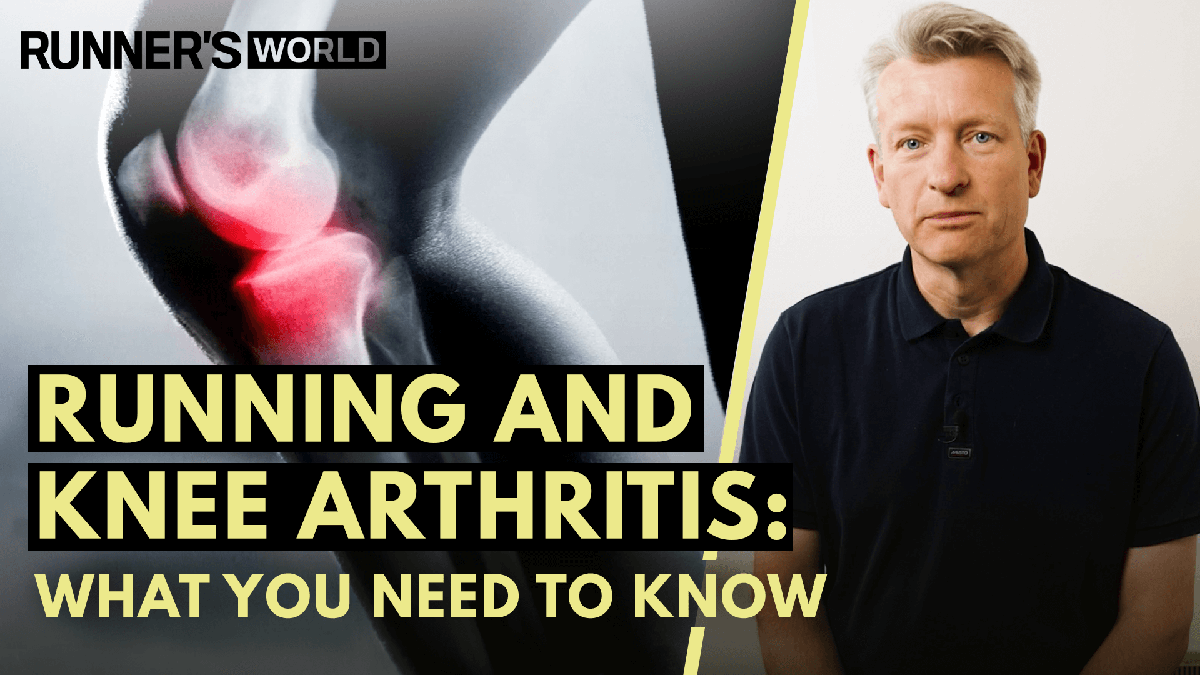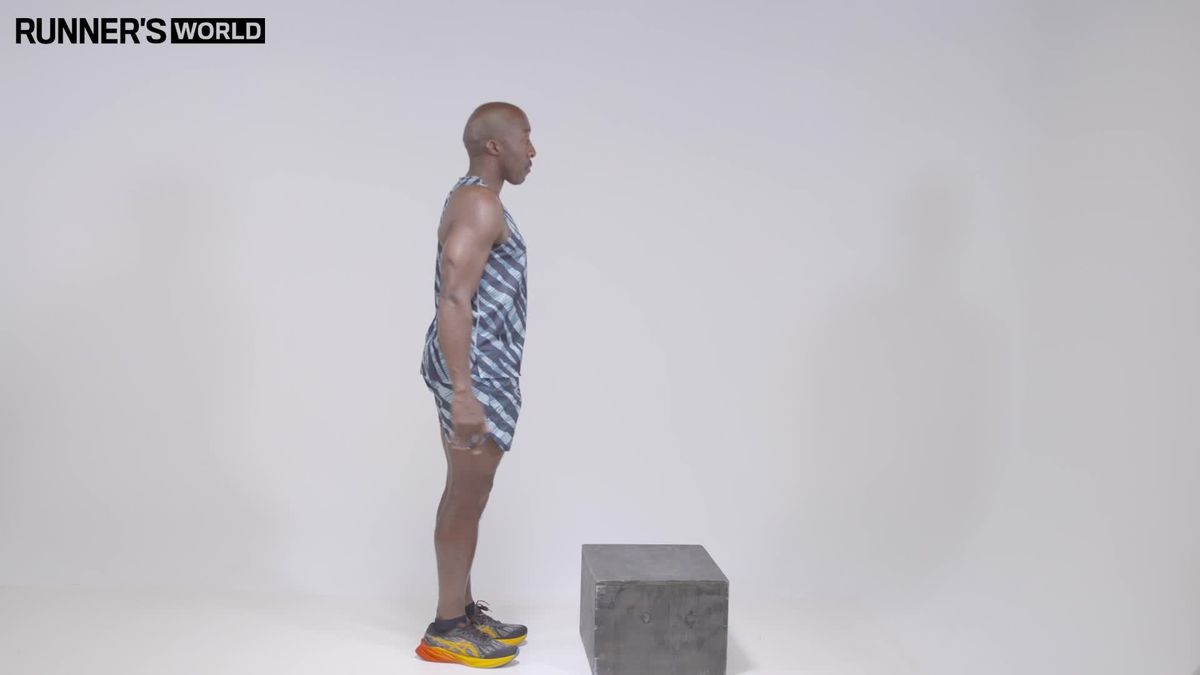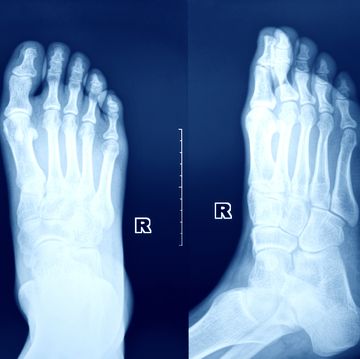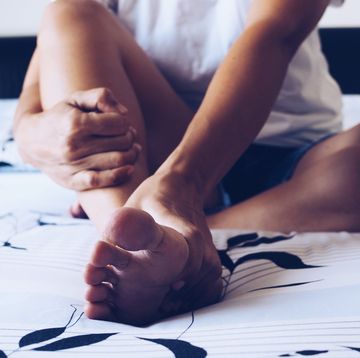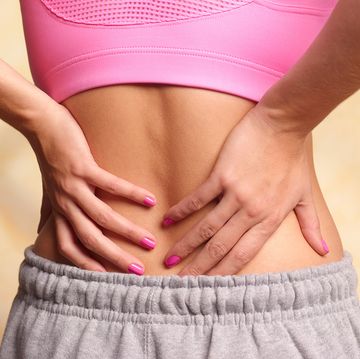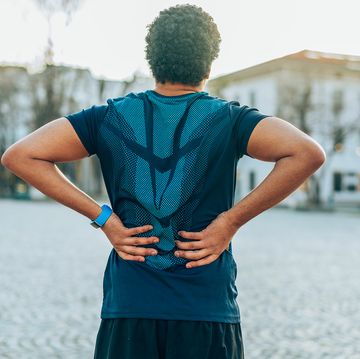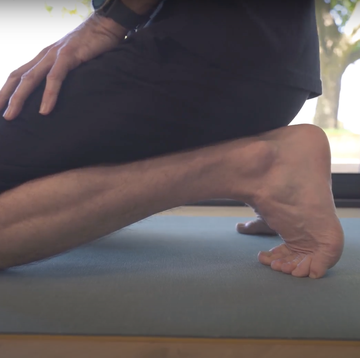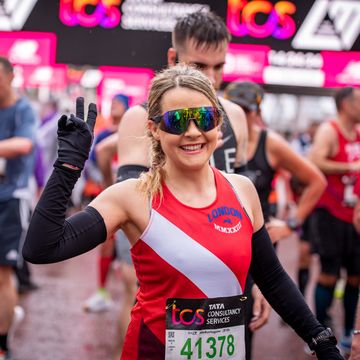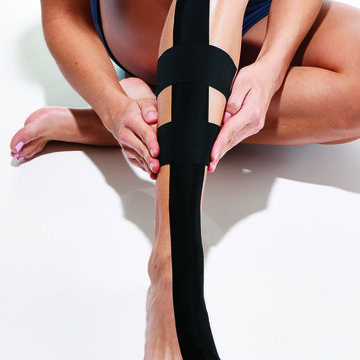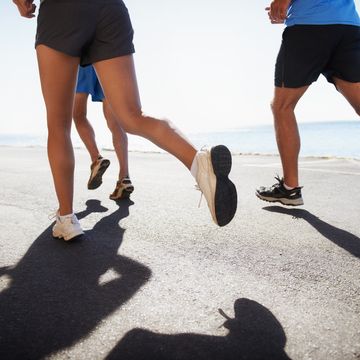Jump to:
- Types of arthritis in the knee
- Symptoms of arthritis in the knee
- Does running increase your risk of knee osteoarthritis?
- Can you still run if you have knee osteoarthritis?
- What is the best treatment for arthritis in the knee?
- What exercises should you do?
- How can you avoid getting knee osteoarthritis?
It’s commonly thought, especially among non-runners, that running will damage your knees over time. That would make staying on the sofa seem eminently sensible. But it’s more likely that regular exercise conditions your knees to become more resilient, improving the condition of the cartilage in your joints through regular use.
In 2017, a cross-sectional study from the Osteoarthritis Initiative to evaluate the relationship between running and knee pain concluded that ‘there is no increased risk of symptomatic knee osteoarthritis among self-selected runners compared with non-runners.’ And if you don’t already have arthritis, ‘running does not appear to be detrimental to the knees.’
If you do develop arthritis in your knees, however, it is a long-term condition without a cure. But the symptoms can be managed, and your condition can improve with the right treatment.
Types of arthritis in the knee
Arthritis is pain in your joints. They might be swollen and inflamed or stiff. It affects about 10 million people in the UK, and there are a lot of different types, including rheumatoid arthritis, where the body’s immune system attacks itself, fibromyalgia, which affects the muscles, ligaments and tendons, and gout, where an excess of uric acid in your blood makes crystals form around your joints, often in your big toe.
Osteoarthritis is the most common form of arthritis. It occurs when the cartilage – the protective tissue between your bones – becomes rougher and breaks down. The body’s attempt to repair it can create an increase of fluid in the joint, causing inflammation, and also extra bone forming in the area in unhelpful shapes. These ‘spurs’ are called osteophytes and cause painful additional friction in the area. Osteoarthritis most commonly occurs in the hands, hips, spine and knees.
Symptoms of arthritis in the knee
When osteoarthritis appears in the knee you might feel pain and stiffness and a grating feeling when it moves. The cartilage will be thinner and rougher around the knee where the bones meet. It feels painful and tender and you might hear a sound when you move it. The pain would be worse during activity, just after a longer activity and at the end of the day. It would feel stiffer in the morning or after resting, when it hasn’t been used for a while. It used to be thought of as a 'wear and tear' condition but is now considered to be a disease of the whole joint.
Does running increase your risk of knee osteoarthritis?
Running does not cause knee osteoarthritis. You’re more likely to get it if you’re over 45, if you’re female, if you’re overweight, or if you have had a previous injury that caused knee damage. The condition is also more common if other family members have it. A study in 2014 looked for reasons why running was no worse than walking for the knees, even though the ‘peak knee joint contact forces, or ‘loads’ are much higher. It concluded that: ‘Compared with walking, the relatively short duration of ground contact and relatively long length of strides in running seem to blunt the effect of high-peak joint loads.’
According to physiotherapist and England Athletics Medical Lead Sarah Connors, keeping your body active and strong is a great help: ‘Basically, if the muscles are strong enough, the muscles take the force of the running. If they aren’t strong enough, your joints take the force of the running. And if your joint isn’t strong enough to do what you’re asking it, it will hurt. If you keep your body strong by running, compared to Joe Bloggs who doesn't run and is overweight, his arthritis is way more likely to be a problem than yours.’
Can you still run if you have knee osteoarthritis?
Running can be a good way to prevent the symptoms of knee osteoarthritis from getting worse. It should keep your weight down, which will reduce stress on your joints. But you should pay attention to any pain to make sure you are not going too far or too fast. ‘If you’ve got a joint that’s already a bit worn and you’re trying to do ultrarunning, it won’t like it,’ says Sarah Connors, who is also the co-author of the book Running Well. ‘Your body’s got to be strong enough to do what you’re asking it to do. But the best thing you can do with an arthritic knee is keep it mobile and keep it strong. Any joint gets its nutrition by movement, so if you do nothing, it’ll just get stiffer and stiffer.’
What is the best treatment for arthritis in the knee?
A GP might suggest paracetamol or anti-inflammatory drugs for pain relief, but longer term, osteoarthritis can be managed through lifestyle change. The NHS encourages exercise to lose weight, improve posture and relieve stress – good news for runners. Making sure you are running in the right running shoes for you, and running on softer surfaces such as grass, will also help to reduce any discomfort.
Physios agree that having strong muscles is the most helpful thing in the long term, but in the stage when inflammation is highest, it can be harder to work on this. ‘When you have pain and swelling, the quadriceps at the front of the thighs are inhibited, or switched off internally, so you need to re-recruit those,’ says sports physiotherapist James Vickers. In the early stages you can use a muscle stimulator, or strengthening techniques that are low joint load, like blood flow restriction training. You could also try hydrotherapy – exercise in water – to take some of the body weight away and get the muscle function up.’
What exercises should you do?
Mobility
It’s worth visiting a physiotherapist to show you what to do to maintain a full range of movement in your joints. However, Matt Bergin, chartered physiotherapist at Performance Team and Witty, Pask and Buckingham Physiotherapists, suggests the following mobility exercise to do at home.
Knee joint towel distraction technique
- Sitting on the floor or chair, tightly roll up a towel and place it behind the knee so that it is held in place between the back of your thigh and upper calf.
- Place both hands around the front of your shin and gently pull the shin towards you to compress the towel, holding for roughly five seconds, then releasing for two seconds.
- Repeat this for 1-2 minutes. Do this twice daily.
Strength
If your knee is in a lot of pain you’ll need to decrease the amount of running you’re doing and work on getting it stronger. Bergin recommends the following exercises:
Double-leg squat
- Stand with your feet hip-width apart, toes slightly turned out. Keep your back straight and chest open, head up.
- Make sure your heels stay on the ground throughout.
- Send your hips back, as if you are about to sit down in a chair behind you. Bend your knees as low down as possible – aim to get your thighs parallel with the floor – but make sure you keep your chest up and don’t allow to to fall forward.
- Press through your heels to return to standing.
- Perform 3 sets of 15 reps.
Split squat
- With your feet hip-width apart, place your right foot forward and left foot behind your body, with your heel elevated slightly so that you are balancing on your toes.
- Keep your back straight and lower your left knee towards the floor. Your front knee should be at a 90-degree angle and behind your toes.
- Just before your left knee touches the floor, press your front foot into the ground to drive your left leg back up to the starting position.
- Repeat 3 sets of 15 reps, using your own bodyweight initially. Repeat this on both legs.
Once you have done this for a few weeks and things become too easy add some extra weight, 10kg is a good start. Perform 3 sets of 12 reps. Repeat on both legs.
Rear foot elevated split squat
This is a progression of the split squat – move onto this once you become stronger and more confident performing a standard split squat.
- With your feet hip-width apart, place your right foot forward and the left foot behind your body on a bench that’s about knee height. Keep your hands on your hips.
- Keep your back straight and lower your left knee toward the floor. Your front knee should be at a 90-degree angle and behind your toes.
- Lower yourself down, stopping an inch from the floor if you can.
- Press your front foot into the floor to drive back up to your starting position
- Perform 3 sets of 15 reps.
Step ups
- Start by standing in front of a box roughly shin/knee height.
- Step forward onto the box with your left foot and push up through your heel to lift yourself up, bringing your right foot through in front of you. (You can drive this leg through into a high-knee running position to make things more challenging.)
- Hold the position at the top for a moment before stepping back down with your right foot.
- Focus on controlling the left leg, ensuring the knee doesn't collapse inwards as you lower your right leg back down.
- Perform 3 sets of 15 reps.
Movement control
Movement control exercises target the neuromuscular system: the brain-`muscle connection that takes signals from the brain to the muscles, causing them to fire and produce movement. By performing specific movements – often those involved in the running cycle – we can focus on the individual coordination, stability and control components required to produce these movements efficiently, helping to develop neuromuscular pathways.
Lateral stepdown
- Stand on a step with one leg, with the other leg and your arms out in front of you.
- Squat, bending at the knee and sitting your hips back.
- Keep the other knee in line over your foot.
- Once you feel the squat in your quad and glutes, extend your leg back up to standing.
- Perform 3 sets of 15 reps.
Banded glute pulley
- Stand with band around both ankles, balancing on one leg.
- On the standing leg keep the foot facing forwards, with the knee slightly bent and aligned over the third and fourth toes – maintain this position throughout
- Keeping the opposite leg straight, perform a ‘pulley’ motion where you pull the leg diagonally back to 45-degrees. The movement should be purely from the hip, do not rotate or twist from the waist or upper body.
- Gentle ‘brace’ through the trunk throughout and do not allow your lower back to arch or your body to lean forwards excessively.
- Perform 3 sets of 15 reps, using a light-medium resistance band. Repeat this on both legs.
General strengthening
In addition to the rehab exercises above, both Bergin and Connors recommend improving your whole-body strength with regular strength training. ‘Think about the fundamentals of running: you’ve got to be able to stand on one leg, you’ve got to be able to control a one-leg knee bend, you’ve got to be able to do some simple calf raises, and you’ve got to be able to do a lunge and a squat,’ says Connors. ‘If your body is not strong enough to do those things then you probably can’t run without problems. You need to make sure you’ve got those basics right. I would get people doing three lots of 25 single-leg calf raises and three lots of 20 single-leg glute bridges, three times weekly, to develop that basic endurance that you need in the muscles. Then you would start adding on some weights to help you to get even stronger.’
When it comes to calf raises, Bergin recommends doing a variety of both bent knee and straight variations to increase soleus strength. 'Poor strength in the soleus will increase knee-ankle range which will place more stress through both the knee joint and patellofemoral joint,' he explains.
How can you avoid getting knee osteoarthritis?
To repeat, as a runner you are no more likely to get knee osteoarthritis than anyone else, and a good deal less likely than someone who is overweight or inactive. According to James Vickers, muscle strength is the key, but the best results will come from doing other exercise in addition to running. ‘If your body is like a car, the muscles are the suspension absorbing the energy. If your suspension is not great then the chassis, or the joints, will take more load. So you need to have good muscular strength but it’s very hard to maintain that strength solely by running. Strength exercises could be in the gym but can also be done at home, ideally with some additional weight. Gym classes like body pump and step are very strength focused. Mat-work Pilates probably won’t provide you with the strength but something like reformer Pilates on a machine is helpful, or power yoga – anything with more emphasis on strength and stability than stretch and mobility. But the crux of it is: if you want to run, you’ve got to be strong.’
..

Chartered Physiotherapist
Matt is an international middle-distance runner with a keen interest in running-related injuries, rehabilitation and prehabilitation.

